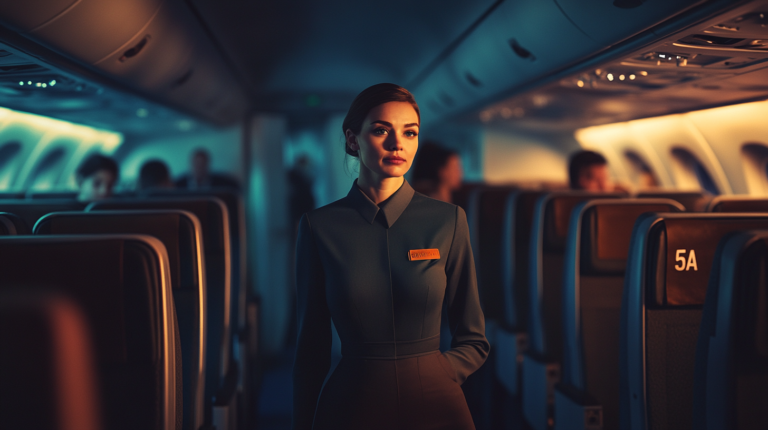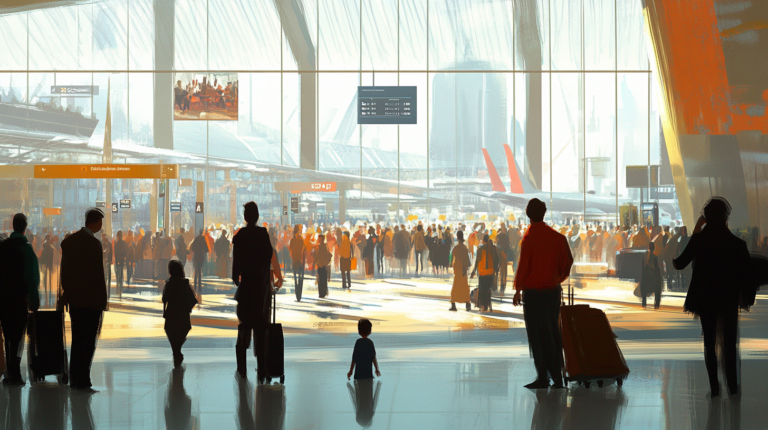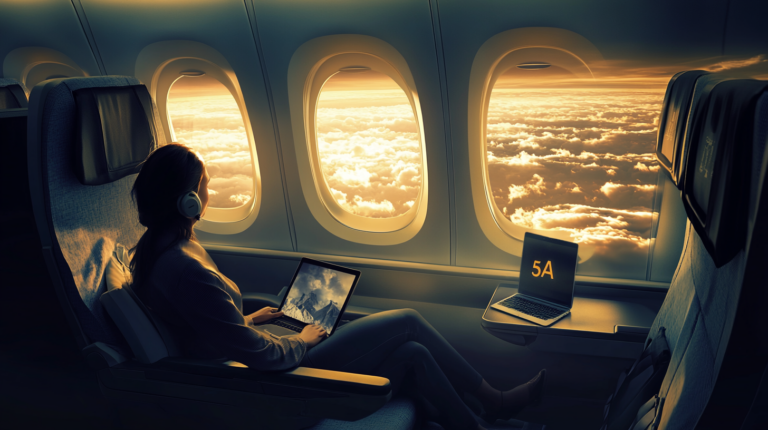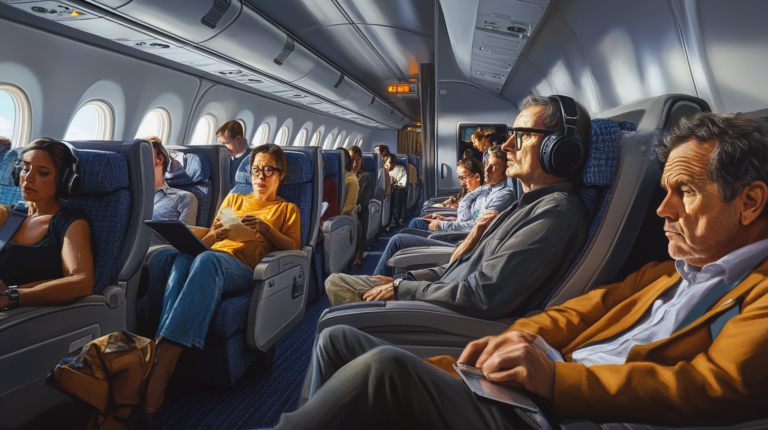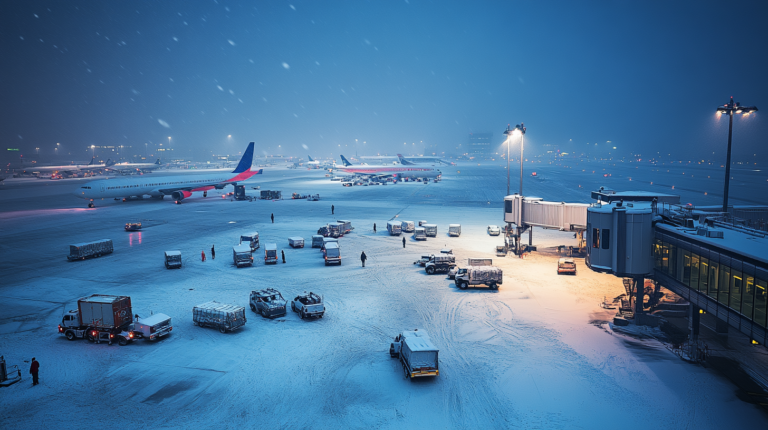Packing Like a Pro: The Seat5A Business Travel Guide
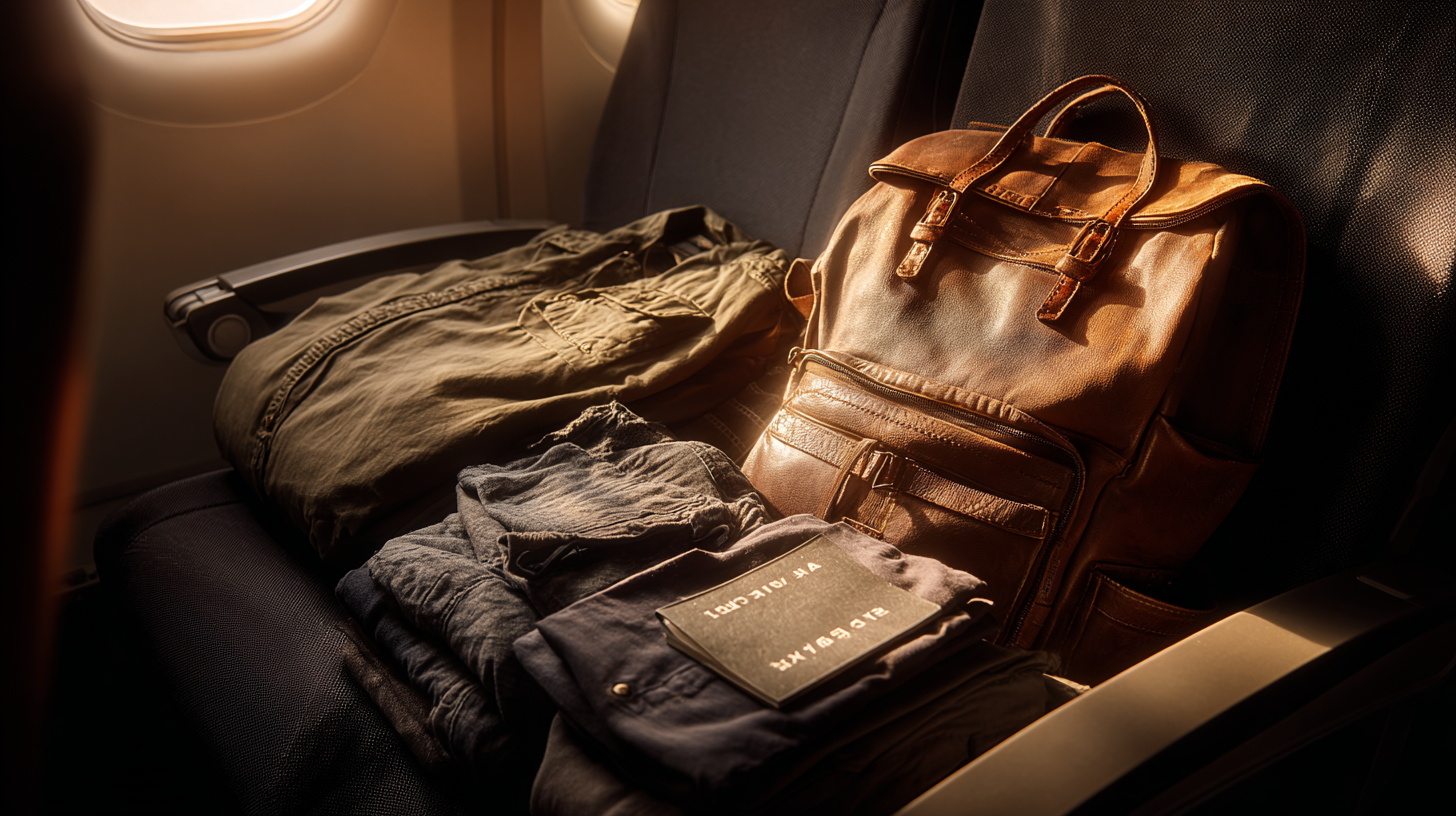
Business travel has evolved at lightning speed in recent years. According to industry data, worldwide business travel spending is projected to soar to over $1.6 trillion by 2025. I’ve learned that a strategic approach to packing doesn’t just reduce stress—it transforms the entire trip. From my vantage point, there’s nothing more satisfying than snagging a great seat and knowing I’m fully prepared for everything from crucial meetings to spontaneous networking opportunities.
Below is my step-by-step guide to efficient travel packing that merges professional polish with personal comfort. I believe in mixing proven tactics with a few seat-savvy tips I’ve picked up during my travels. Let’s dive in.
1. Start with Your Itinerary
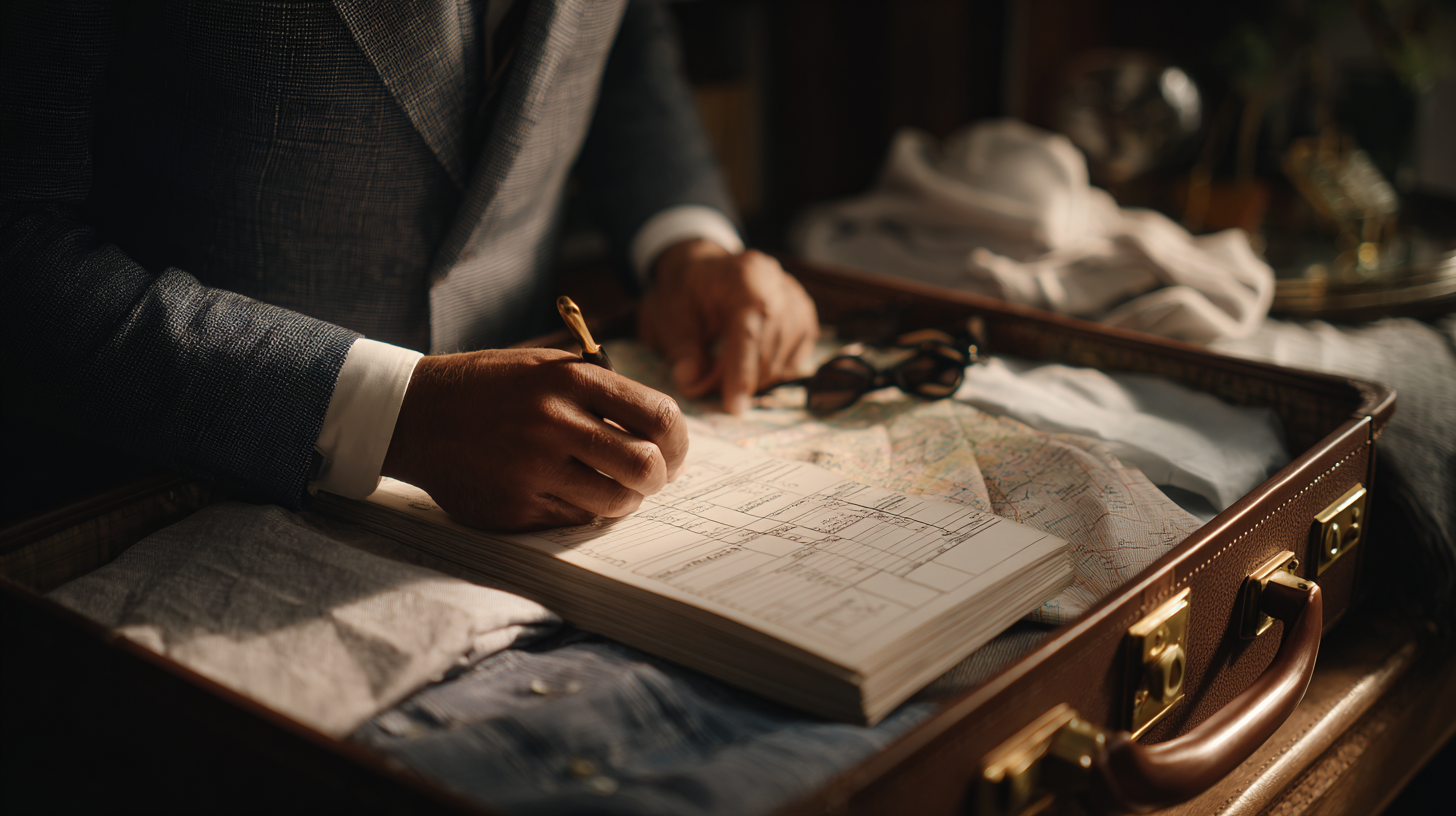
Over the years, I’ve discovered that an itinerary is more than just times and locations—it’s a roadmap to peace of mind. Mapping out flight times, hotel check-ins, and meeting schedules allows me to determine exactly how many outfits, technology devices, and toiletries I’ll need. According to a recent travel survey, 76% of frequent flyers say a detailed itinerary lowers their airport stress levels.
Don’t forget to factor in any airport lounges or shared coworking spaces you may visit. Knowing if you’ll have downtime to charge devices or freshen up can make or break a busy day. For instance, I once scheduled a quick half-hour break at a lounge and squeezed in a power nap and wardrobe refresh. That short stop elevated my energy levels for an afternoon of meetings. By staying aware of each leg of your journey, you’ll be ready to handle both business obligations and spur-of-the-moment excursions.
Finally, if the itinerary includes post-conference dinners or local exploration, building that into your calendar ensures you pack not just suits and ties, but also an outfit that’s comfortable for a stroll around town. When your itinerary blends work and play, your packing list follows suit seamlessly.
2. Build a Capsule Wardrobe

Rather than overpacking, I focus on versatile pieces: a pair of wrinkle-resistant slacks, a few crisp shirts, and a blazer that can double up for formal and casual settings. I also believe in colors that effortlessly interchange, like navy or charcoal. A study from a leading fashion institute in 2023 showed that simple, cohesive color palettes reduce packing volume by up to 30%.
For extra organization, I roll my clothes and sort them into Packing Cubes. Rolling not only maximizes space, but it also keeps my garments relatively wrinkle-free—especially helpful when I’m racing from the plane to a downtown meeting. A well-packed work ensemble can mean the difference between looking fresh and looking frazzled. And trust me, meeting hosts notice.
I’ve found that stashing a single pop-of-color accessory—like a tie or scarf—injects enough personality into an otherwise neutral wardrobe. It’s one of my favorite techniques to add flair without busting the seams of my carry-on.
3. Keep Tech Essentials Handy
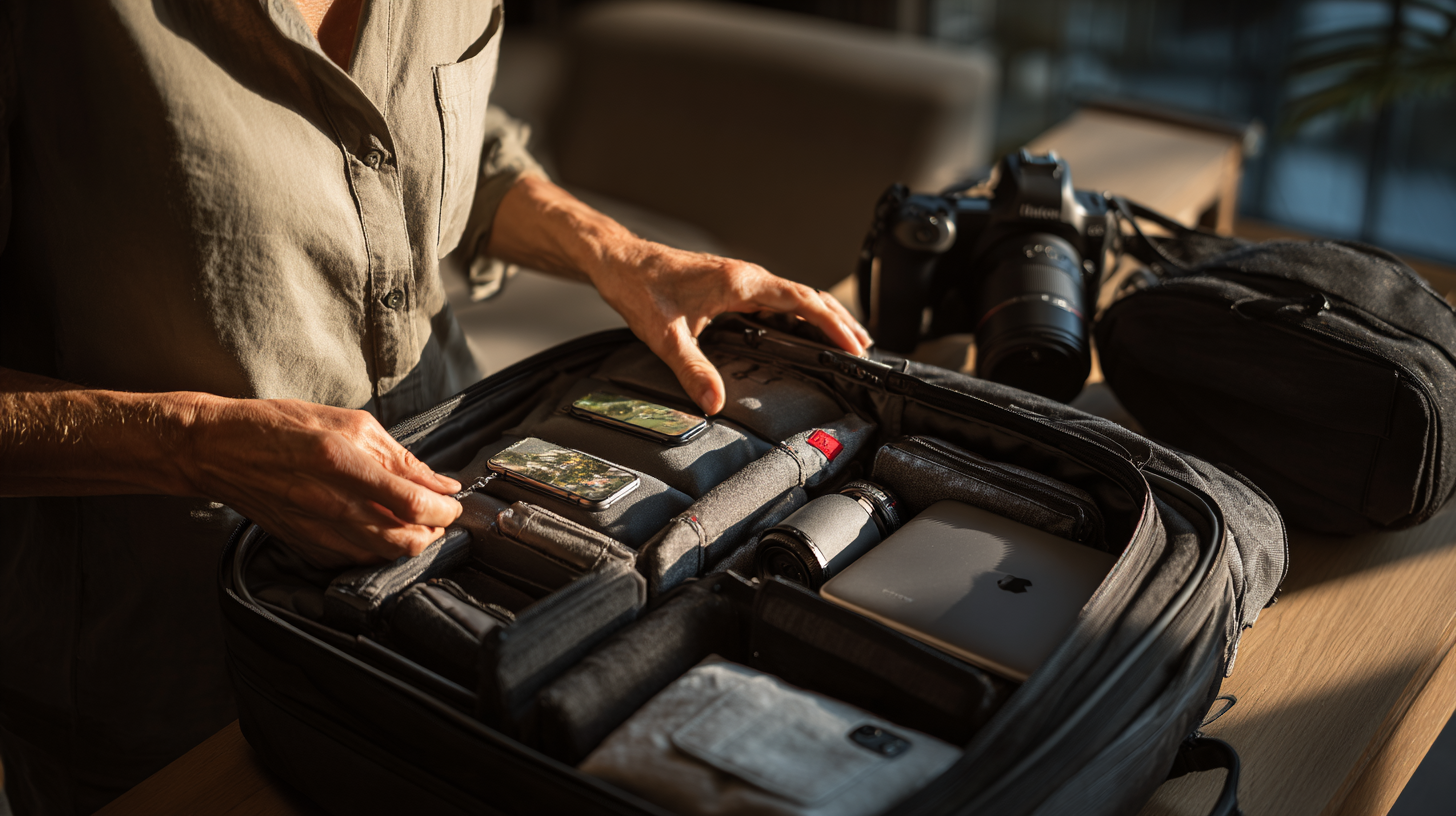
In my travels, few things test patience more than rummaging through a jumbled bag for laptop chargers and earphones. I combat this by dedicating one section of my carry-on to tech gadgets and cables. It helps that many modern carry-ons come with built-in compartments, but a simple travel pouch works too.
According to a 2025 consumer tech study, travelers bring an average of three to four devices on a typical trip, including smartphones, tablets, and laptops. It’s no wonder we’re constantly searching for outlets. I keep a backup Power Bank and Noise-Canceling Headphones immediately accessible. Fishing for them mid-flight in cramped legroom isn’t exactly my idea of fun.
Whenever possible, I also pre-download any critical documents on my devices. Whether it’s a presentation or my boarding pass, I’ve seen how spotty in-flight Wi-Fi can derail last-minute tasks. By keeping all files and backups in a dedicated folder, I minimize potential tech hiccups while airborne.
4. Secure Connectivity and Coverage
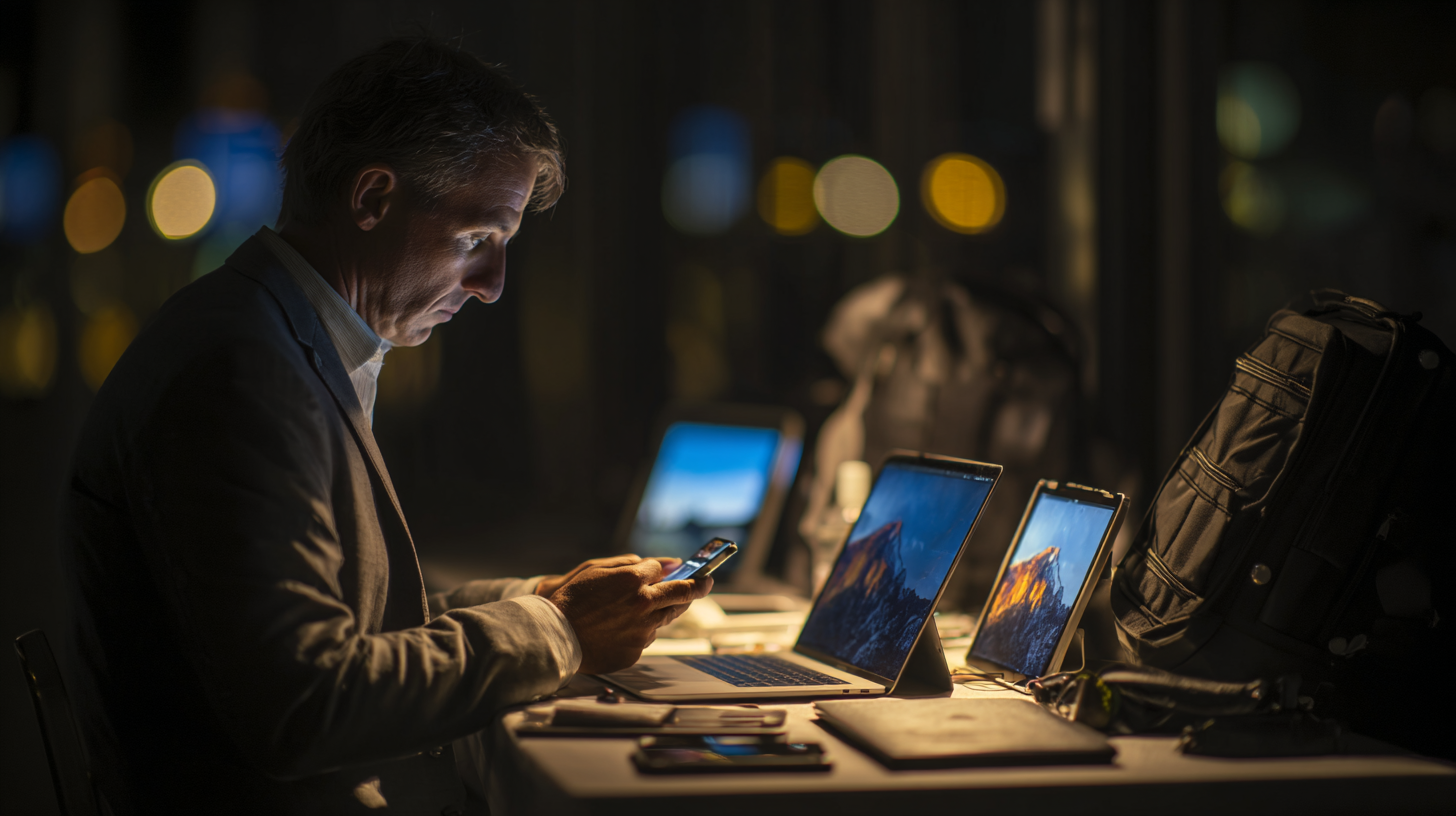
Staying connected goes beyond having a stable Wi-Fi signal. For international travelers, eSIMs or local SIM cards can be lifesavers. In my experience, juggling local phone plans might feel cumbersome at first, but it’s worth the effort when you can call a client from a cab without incurring monumental roaming charges.
I also make sure to enroll in a dependable Travel Insurance policy before I jet off. I’ve seen colleagues lose luggage or face emergency medical expenses abroad without coverage. According to industry reports, only about 38% of business travelers opt for comprehensive travel insurance. That’s a gamble I’m not willing to take. A small monthly premium pales in comparison to the potential costs of flight delays or lost baggage.
Finally, if you frequently fly, lounge memberships can be a major upgrade. I use them to recharge devices, respond to urgent emails, and even sneak in a healthy snack. It’s amazing how a bit of quiet can help you refocus before the next leg of your journey.
5. Go Carry-On with Smart Luggage
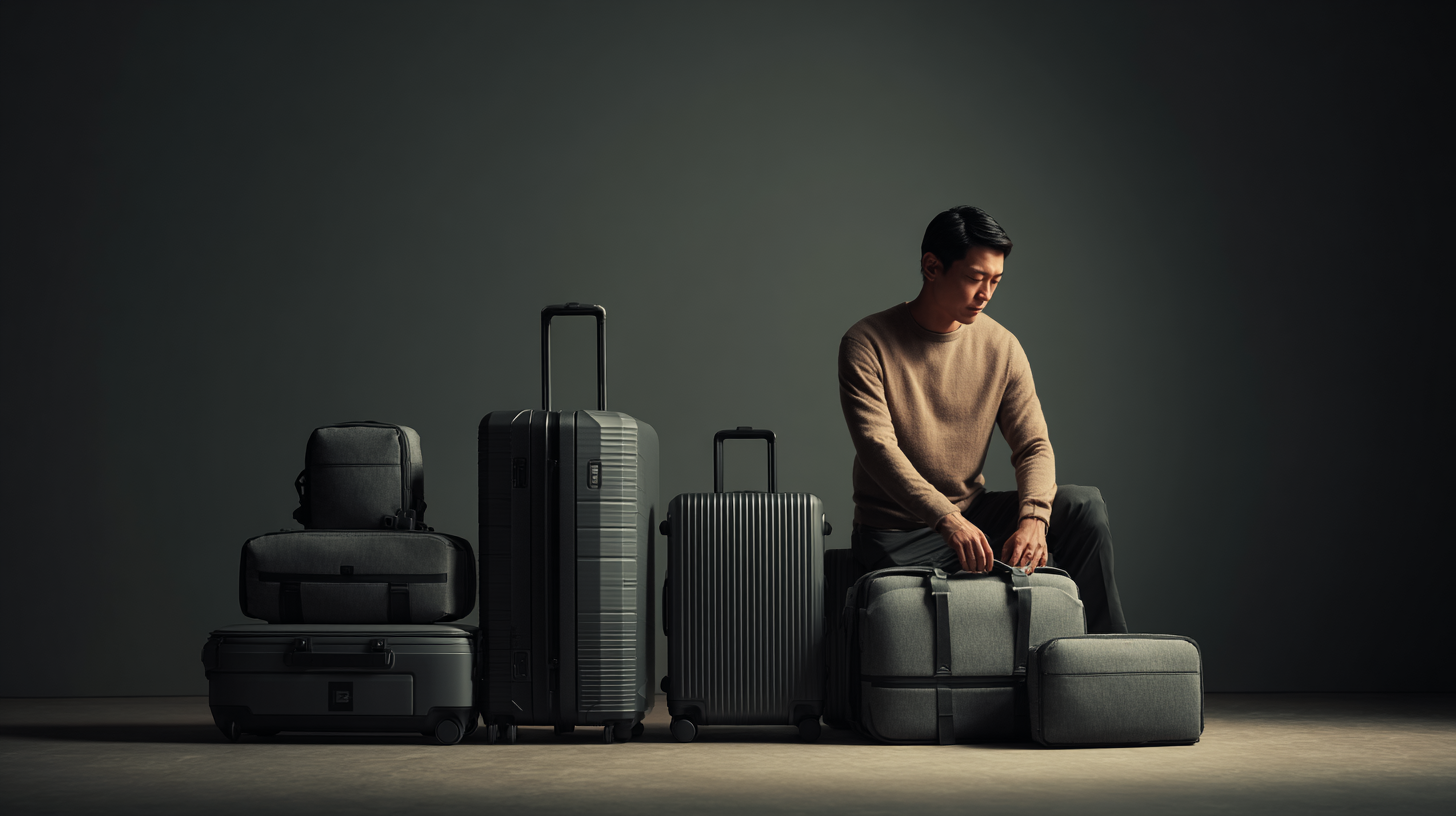
Travel gear has come so far. I remember wrestling with a clunky suitcase that barely fit in overhead bins—truly a travel nightmare. Now, I opt for smart luggage that has built-in compartments, garment bags, and space-saving design. It’s a game-changer when I’m trying to snag a prime seat and store my bag right above it.
Many top luggage brands now offer advanced materials for both sturdiness and flexibility. The 2024 Luggage Tech Expo showed a 45% increase in carry-ons with built-in USB charging ports. That’s especially helpful for my phone, particularly when airport outlets are occupied—or just plain elusive. I can’t tell you how many times a hidden power source in my carry-on saved my day.
Another benefit of going carry-on only is avoiding the baggage carousel altogether. I once dashed off a plane and arrived at a downtown meeting in under 30 minutes, all because I didn’t have to wait for checked bags. In business travel, every minute can matter.
6. Master Toiletries and Travel Gadgets
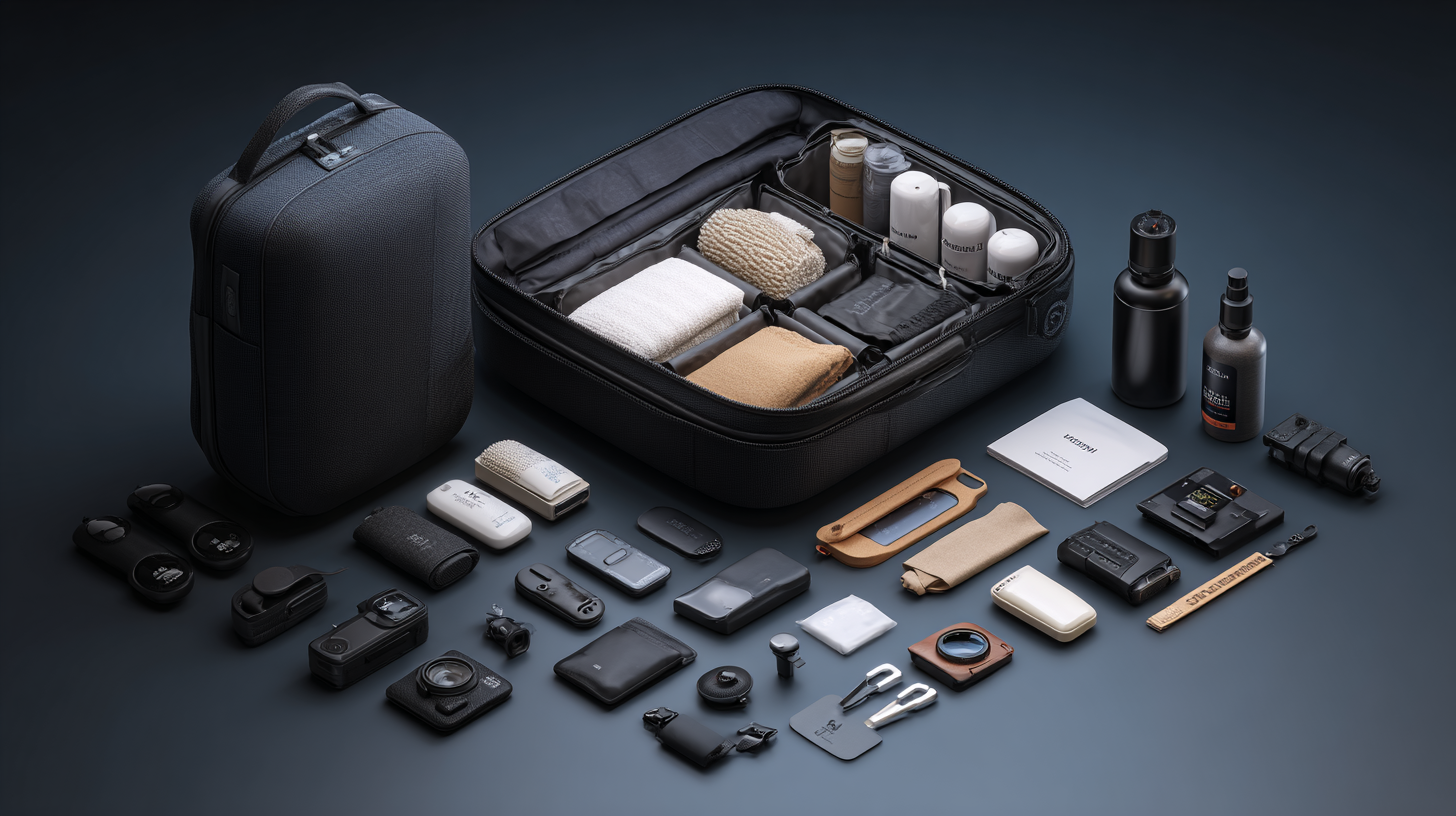
Over time, I’ve curated a set of TSA-friendly toiletries that keep me feeling fresh without adding bulk. A collapsible toothbrush, small tubes of toothpaste, and refillable 3-ounce bottles of shampoo slip into a clear pouch with ease. A 2025 TSA report showed that almost one in ten checked bags contain oversized liquids. Keeping everything miniaturized goes a long way in saving time at security checkpoints.
But I don’t stop at the basics. I’ve grown to appreciate small travel gadgets like Universal Adapters and foldable umbrellas. One rainy afternoon in Singapore taught me the value of always having an emergency poncho. These seemingly minor items can make or break a day, especially on tightly packed itineraries.
I also keep a backup set of chargers and a favorite moisturizer permanently tucked in my suitcase. Replacing them regularly ensures I’m never caught off guard. It’s a small routine that significantly cuts down pre-trip prep time.
7. Add a Little Leisure

Business trips can be intense, but I’ve found that carving out a bit of fun keeps me balanced. I pack lightweight sneakers or a comfortable pair of slip-ons so I can explore a new city—or at least the hotel gym—without lugging extra footwear around. A 2024 wellness study indicated that travelers who incorporate mild exercise into work trips report 20% less jet lag.
Recently, I met a fellow traveler in an airport lounge who invited me on a quick local tour. Had I not packed casual pants and shoes, I would’ve missed out on a fun cultural experience and a networking opportunity. I’ve learned the best seat doesn’t always have to be on the plane; sometimes it’s on a bike ride through a scenic route or at a local museum café.
It’s worth noting that downtime doesn’t have to be elaborate. Even a short neighborhood walk around the hotel can spark fresh ideas or provide much-needed relaxation. Let yourself recharge—you’ll return to work meetings with a clearer mind.
8. Keep Documents in Order
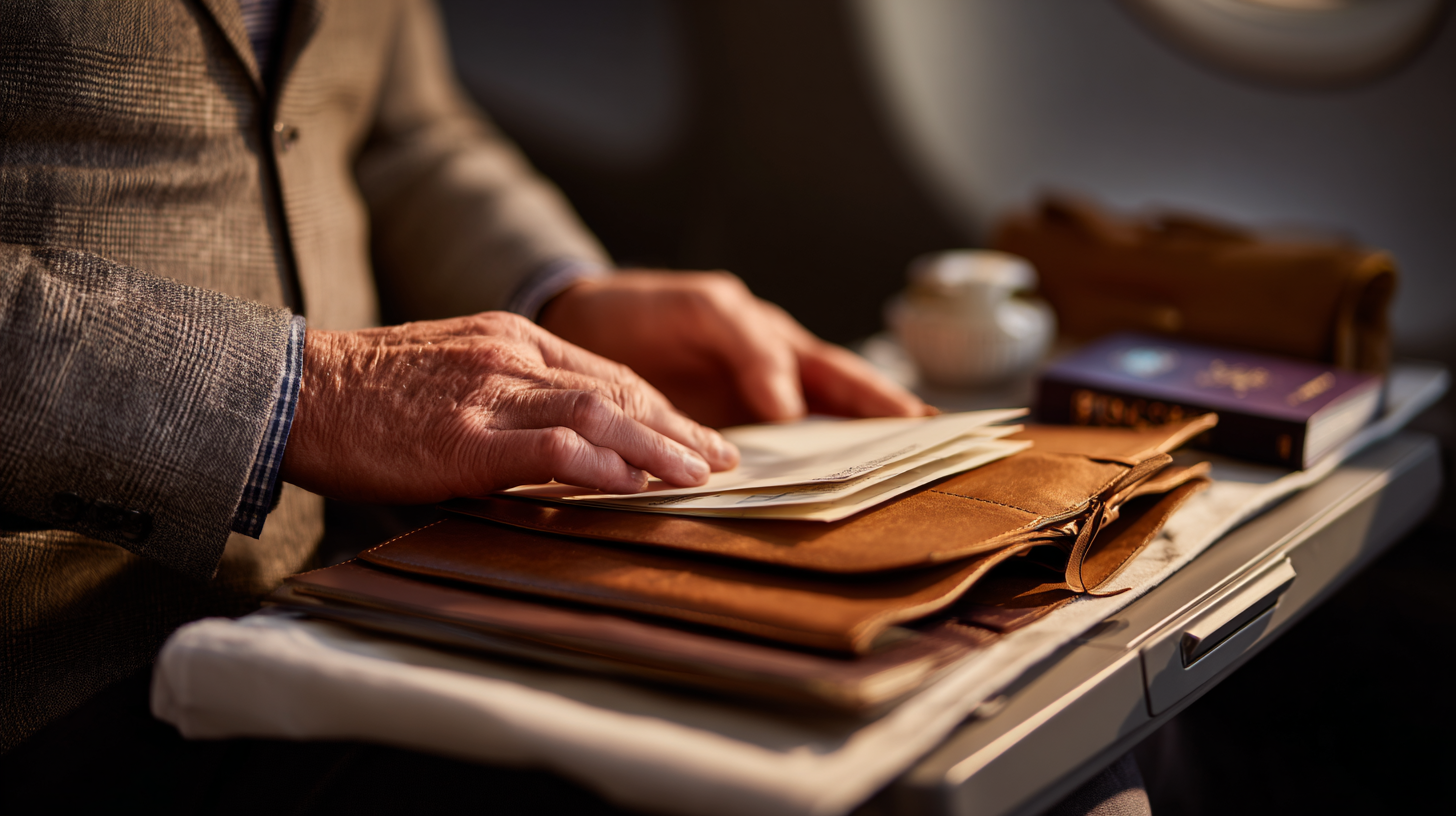
Any time I’m fiddling at a check-in counter, I’m reminded how crucial it is to have documents handy. I store my passport, ID, and any conference materials in a compact, secure pouch I can wear around my neck or tuck into an inner pocket. It keeps me from fumbling when time is tight.
Business cards remain essential in my world. Even in this digital age, nothing replaces the personal touch of handing over a well-designed card. If you’re presenting or attending an expo, keep them in a separate section of your bag, so they remain crisp and undamaged.
I’ve also found it helpful to save electronic copies of travel confirmations and meeting agendas on my phone. That way, if I somehow misplace a physical printout, I can pull up the details in seconds. It’s a small digital safety net that comes in handy more often than you’d think.
9. Choose Productive Accommodations
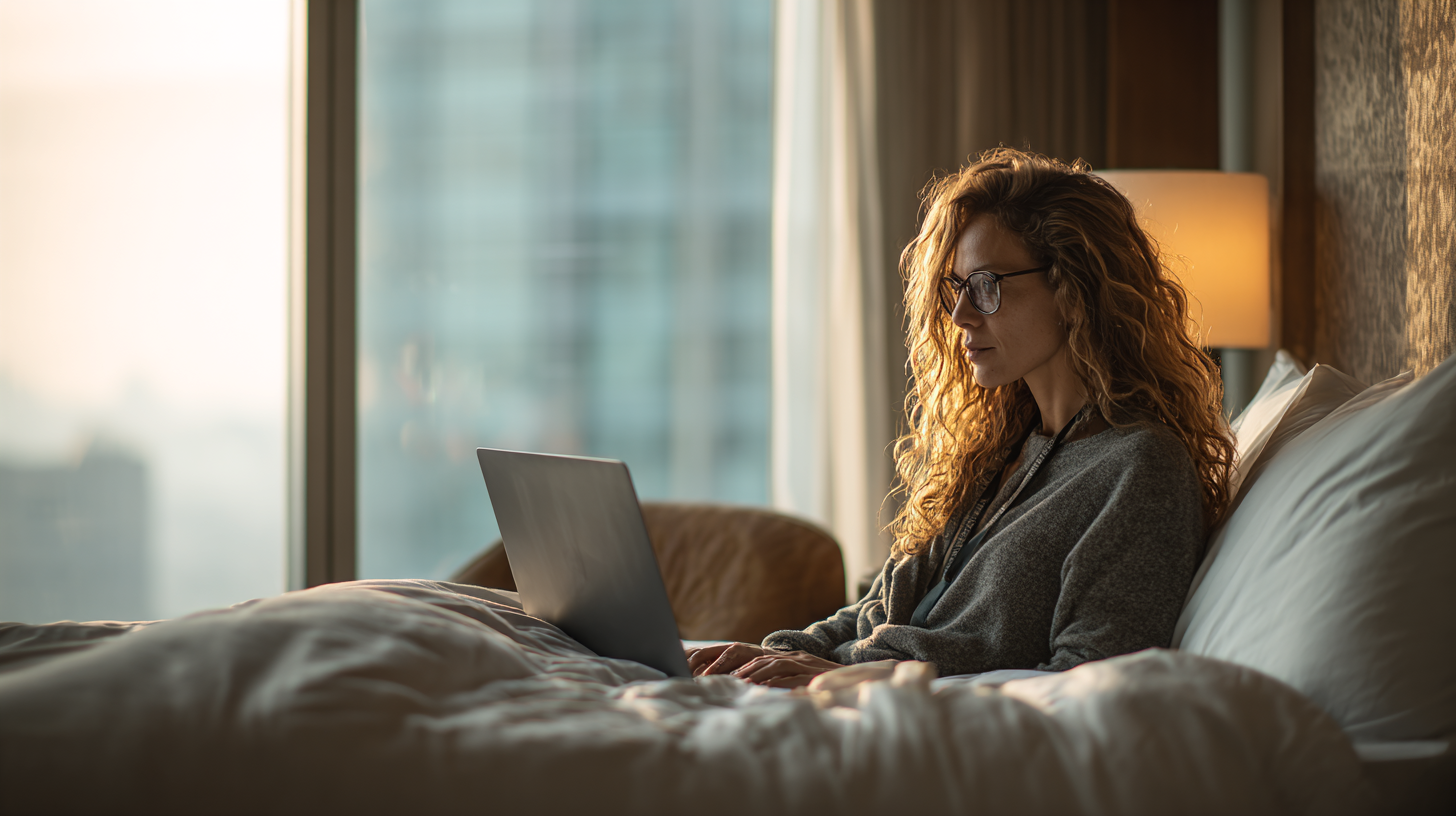
Overnight lodging isn’t just about a place to sleep. From my perspective, the right hotel can double up as a productivity hub. I look for places that offer reliable Wi-Fi, flexible check-in, and extended-stay amenities—particularly useful if I need to practice a presentation or join virtual meetings. Some business-friendly hotel brands also partner with local coworking spaces.
A 2023 hospitality survey reported that 65% of frequent flyers prioritize working amenities above recreational perks. I personally appreciate a good balance: a quiet lounge to focus and a communal area to network or unwind with fellow travelers. It’s amazing how shared work areas can inspire stimulating conversation and unexpected connections.
If your trip extends for several days, consider places that give you a kitchenette or laundry facilities. Ironing a shirt in your own space can save precious time versus hunting down a hotel service or local laundromat. It’s the small conveniences that matter most when you’re juggling a busy schedule.
10. Double-Check Before You Go
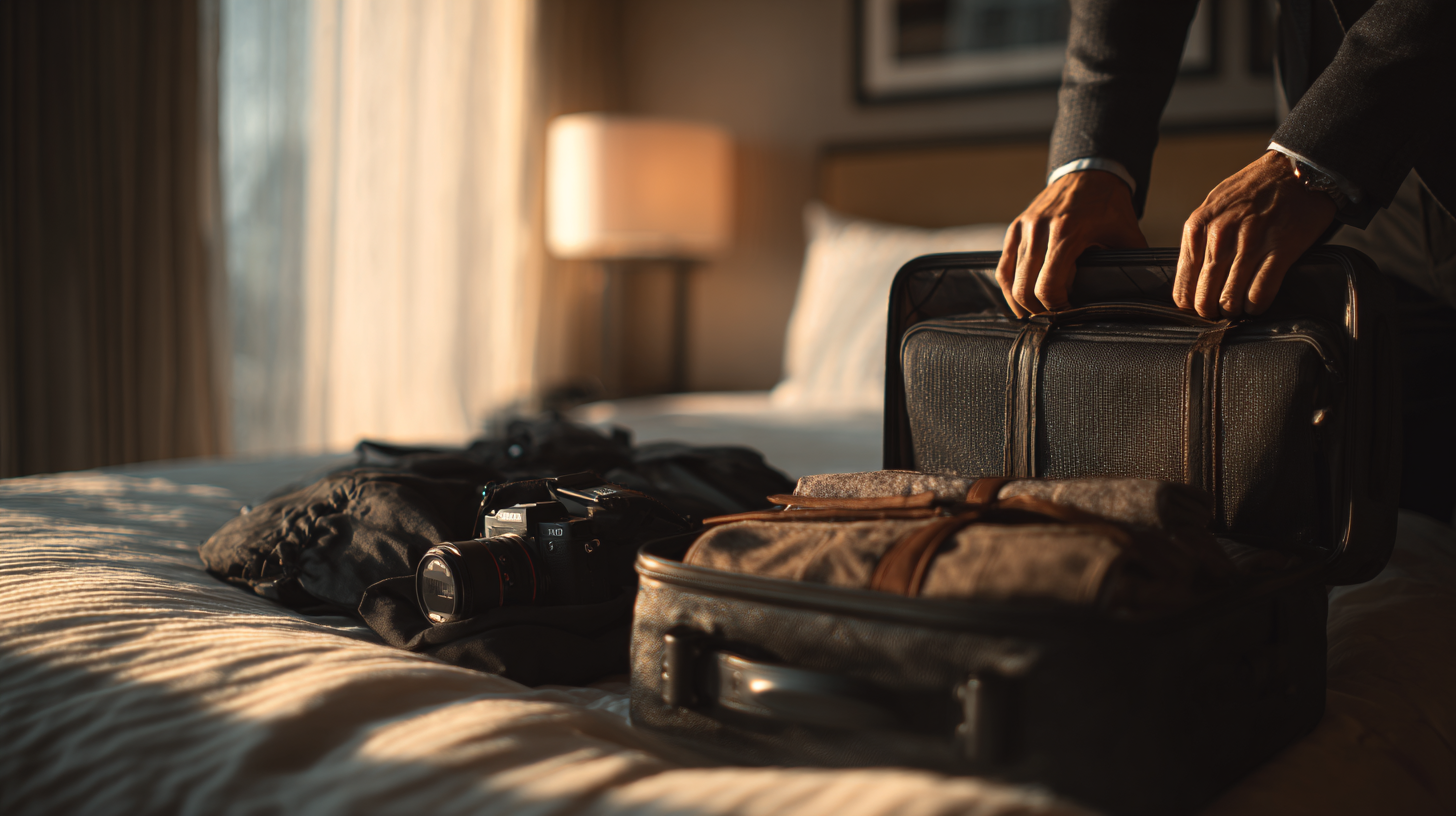
The final prep often decides whether the trip starts smoothly or gets bogged down by last-minute hiccups. I do a quick inventory of items in my carry-on: laptop, chargers, headphones, toiletries, and any specialized materials for my meetings or presentations.
It’s also good practice to confirm flight details and review any gate changes. Some airlines update their schedules frequently, and you don’t want to be sprinting across terminals unnecessarily. I do a final sweep of my packing cubes as well—ensuring no stray sock or accessory gets left behind.
A little diligence before departure day can pay big dividends. If everything checks out, you can head to the airport with a calm confidence that sets the tone for a productive trip.
Final Thoughts
Efficient packing goes beyond saving space—it preserves your mental energy for what truly matters: building professional relationships, making well-informed decisions, and seizing fresh opportunities as they come. By systematizing travel essentials and focusing on strategies that work in real-life scenarios, you free yourself to enjoy the perks of a change in scenery.
One of the best feelings is stepping onto a flight—especially if you can snag a good seat—knowing you’re ready for action. Thoughtful packing, paired with a stress-free check-in process, can spark the kind of confidence that carries over into every aspect of a business trip. From the very moment you sling that carry-on over your shoulder, you’re already a step ahead.
Ryder’s Take
I’ve seen the difference that streamlined packing makes. Grabbing the perfect spot on the plane is easier when you don’t have a bag the size of a small village. And truth be told, there’s just something satisfying about slipping a well-packed bag into the overhead bin with minimal fuss.
Every bit of extra space and saved time feels like a personal victory in the sky. I’m a firm believer that smart packing sets a tone of preparedness, which can transform the entire trip—maybe even inspire you to explore beyond the boardroom.

